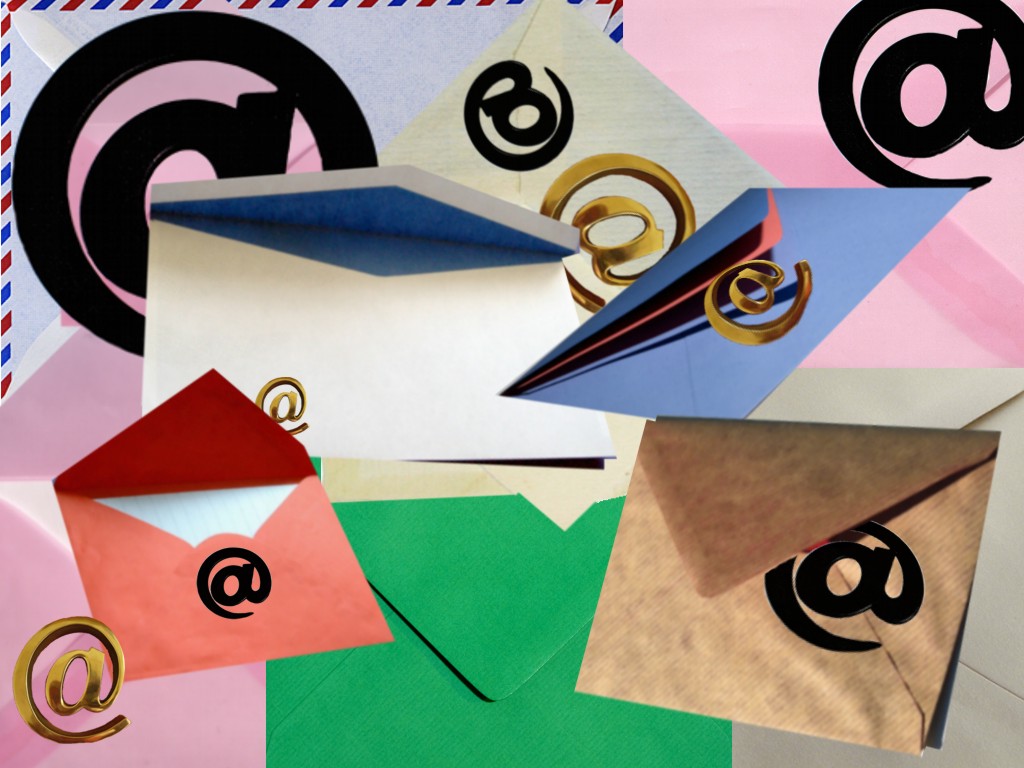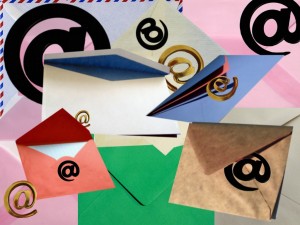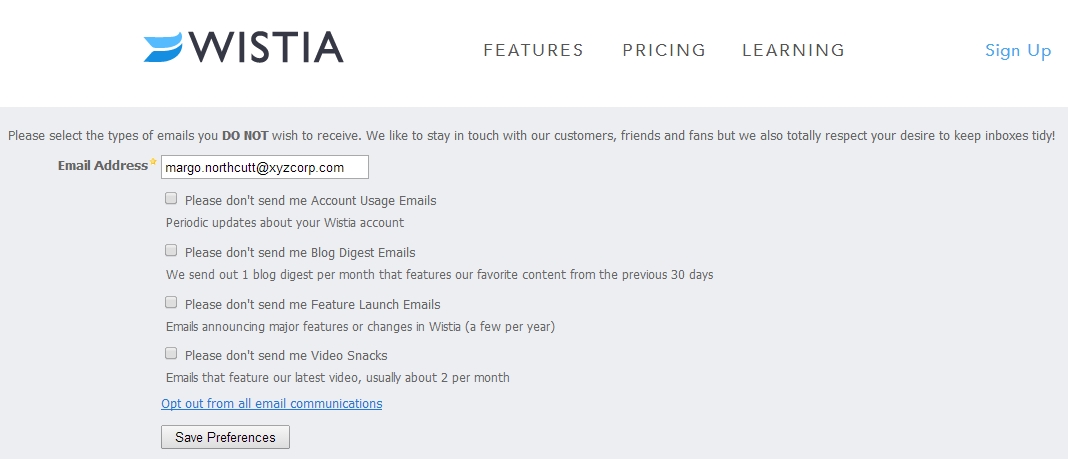6 Ways to Annoy the Heck Out of Your Email List

 Worried that your emails are annoying your list? Good! The fact that you are concerned about what your recipients think is a a huge step towards sending great emails.
Worried that your emails are annoying your list? Good! The fact that you are concerned about what your recipients think is a a huge step towards sending great emails.
As you avoid the email no-no’s below, you’ll be well on your way to sending emails your subscribers actually look forward to.
Here are 6 common tactics that cause people to mark your emails as spam:
1. Don’t get their permission
Any Seth Godin fans out there? Permission marketing is key to email marketing success. We should be sending “anticipated, relevant messages to people who actually want to get them.”
Surprisingly, many marketers out there still think it’s ok to buy or rent lists. Sending emails to purchased lists is not ok. But it’s a great way to get reported as spam, which hurts your future deliverability chances to people who are more likely to purchase from you. Contacts from a purchased list have never heard of your company, and most of them will be confused and annoyed that they are suddenly receiving updates about products and services they’re not interested in.
A more honorable (and profitable) way to grow your list is to first offer something of value to your website visitors that is accessible after they fill out a form with their contact information – maybe a free ebook, report or tool that’s relevant to your industry. They give you permission to contact them in exchange for a useful resource. Win-win! Here are 25 more ways to grow your list without purchasing or renting.
If you want to go further, you may want to consider a double opt-in process. This means that once someone submits their email address to you, you send them a confirmation email asking them to verify their decision by clicking a second opt-in link. This second touch helps confirm that yes, they did sign up to receive emails from you and no, they don’t plan to mark you as spam.
Ignoring responses like “I don’t even know you!!” or “How did I get on your list?!!” or “I hate getting your emails more than I hate root canals!” can also get you more spam reports. Obviously, you don’t have their permission (at least not anymore), and that’s ok. I usually unsubscribe these people instantly. If you’ve got time to spare, you can go the extra mile and write a personal apology or ask for feedback, but for most of us busy marketers, simply unsubscribing them is enough.
2. Only send self-serving, promotional emails
Unless someone someone indicates they are ready to buy (maybe they signed up for a trial or asked to be contacted by a sales rep), it’s not a good idea to start marketing to your new leads as if they are already at the bottom of the sales funnel. Sending only messages like “Start your free trial today” and “48 hour sale starts now!” will turn most people off and give them a good reason to unsubscribe – your emails aren’t relevant to them because they’re not at the buying stage yet. And plus, you’re acting like a selfish golddigger…where’s the love?!
Smart companies kick off their email nurture campaigns with free, useful content and offers. They give before they take. Building a relationship of trust with your leads in the beginning is what will make you their clear choice when they are ready to buy.
HubSpot does this exceptionally well. Once they have your contact information, they start by sending you emails every week or so with only seriously helpful content – no strings attached. I gobbled up their emails for about a year before I actually started using their platform – free cheat sheets, checklists, ebooks, research and tools all extremely helpful for what I do.
Only after I further engaged with HubSpot (i.e. downloading content that showed I was interested in considering their platform or requesting a live demo) did I see any emails about starting a free 30 day trial of their software.
3. Send them broken links
Okay, this is really a waste of everyone’s time. Especially yours! Think of all that went into copywriting, getting your coding just right, segmenting your list and building your landing page. If your call-to-action link is useless, the email and landing page are useless. Bad news.
Fortunately, this one is usually easy to prevent. Make a rule to triple check your email links before hitting send. Also, send a few LIVE emails to an internal test list (not just the “test” version). Pretend you are the target audience and click through to any offers or landing pages – confirm the user experience is sound for several scenarios. Have your co-workers do the same.
Some common reasons links break:
– You must have “http://” or “https://” at the beginning of each URL. Starting off with just “www” will break the link.
– Your website may not be set up to accept query strings automatically added to email URLs by your ESP (email service provider) for tracking purposes (i.e. “utm_campaign=”, “utm_medium=”, etc). Talk to your webmaster about configuring your company’s website to accept these query strings. This also applies for Google Analytics tracking URLs.
– Sending an email to the wrong list can prevent readers from accessing content that is only available for “members” or “customers”. Be sure to triple check you are emailing the right list!
4. Make it hard for them to unsubscribe
The teensy, tiny “unsubscribe” in light colored font that takes an eternity to find, making them endlessly confirm they really, truly want to unsubscribe or worse – not even including a link to unsubscribe! Maybe you require them to email a different email address with a specific phrase, and even then it could take days for someone to honor the request to unsubscribe.
Whatever your sneaky tactic, your contacts will have a much easier time finding the Spam Report button.
Time to change your outlook on unsubscribes. Unsubscribes (in moderate quantities) = free, effortless list cleansing for you! Think about it: if people who don’t ever open or click your emails unsubscribe themselves, your open and clickthrough rates will increase, signalling to email providers and spam filters that your emails are worth delivering. For this reason, you should make your unsubscribe process obvious and easy for your readers.
“Make it easy to unsubscribe?! Are you crazy?”
Enter the glorious Email Preference Center, a good alternative to straight up unsubscribing. Many email platforms let you build an email preference center page where your contacts can choose which types of emails they prefer, update their contact information and let you know how often they want to hear from you. They can also easily unsubscribe from all emails here. No more guesswork for you! Here is Wistia’s simple email preference center: 
Instead of linking my emails straight to an automatic unsubscribe page, I usually just include a clear link to their email preference center, which decreases unsubscribes since they can customize their preferences. Make sure if you choose to do this, there is a clear way for them to also fully unsubscribe within the email preference center.
5. Send from a no-reply address
You claim your company cares about customer feedback, but nothing makes it more obvious that you don’t than sending from “no-reply@wedontcare.com”. Not only does this look bad to your leads and customers, but it harms your bottom line. Missing out on responses could mean losing current customers, losing potential customers and missing out on innovative ideas that could give you a competitive advantage.
At my last company, I received several replies from our emails with new ideas for our software that actually made it into our live offering, complaints that led to upsells, and tip offs about broken elements of our email templates.
Not all email responses are productive, but there are enough gems to merit a means for feedback. In short, send your emails from a real person. There’s a reason the pros do it.
 You’re thinking – “But I don’t want to receive hundreds of out-of-office autoresponders and hate mail in my inbox..”
You’re thinking – “But I don’t want to receive hundreds of out-of-office autoresponders and hate mail in my inbox..”
In the past, I’ve solved this inbox-overload problem by creating alias inboxes for members of our team. For example, instead of using my real address for the sender name (let’s say margo.northcutt@xyzcorp.com), I had our IT dept create a separate inbox for mnorthcutt@xyzcorp.com. My real inbox sees no impact, but responses are still collected and I can see and respond to them when it’s convenient. Plus, my subscribers now know that real humans work at XYZ Corp!
Remember to monitor the alias inboxes on a regular basis – at least every couple days. I set up a triage process so that I wasn’t having to respond to all sorts of issues and questions myself. I would forward emails to the appropriate departments to handle and respond to. If you have the resources, you could also set up email addresses that automatically create a ticket within your support system (ours was Salesforce).
6. Don’t optimize your emails for mobile
How annoying is it to open an email on your mobile device and realize that in order to read it, you have to zoom in and scroll back and forth constantly?
Nearly 50% of emails are opened using mobile devices (Litmus, Feb 2014). No more excuses for postponing mobile-friendliness! Especially since several email tools out there offer responsive email templates right out of the box.
If you don’t have these types of templates available and you’re not comfortable coding them yourself, consider choosing a few email templates that have done relatively well in the past for you and have a digital marketing agency responsify (yes, I made that word up at my last company) them. Then use these as the basis for your future emails, making minor tweaks as necessary. Let me know if you need recommendations on agencies – not all are as skilled as they claim in mobile design, that’s for sure!
Whether you take on the code yourself or have someone else do it for you, be sure to send the finished templates through a Litmus test. Look for any formatting weirdness on the popular email clients and apps. Unfortunately, there are coding trade-offs and the various email clients will render your HTML differently, so don’t be too critical.
What other tactics annoy your readers? What solutions have you found?
